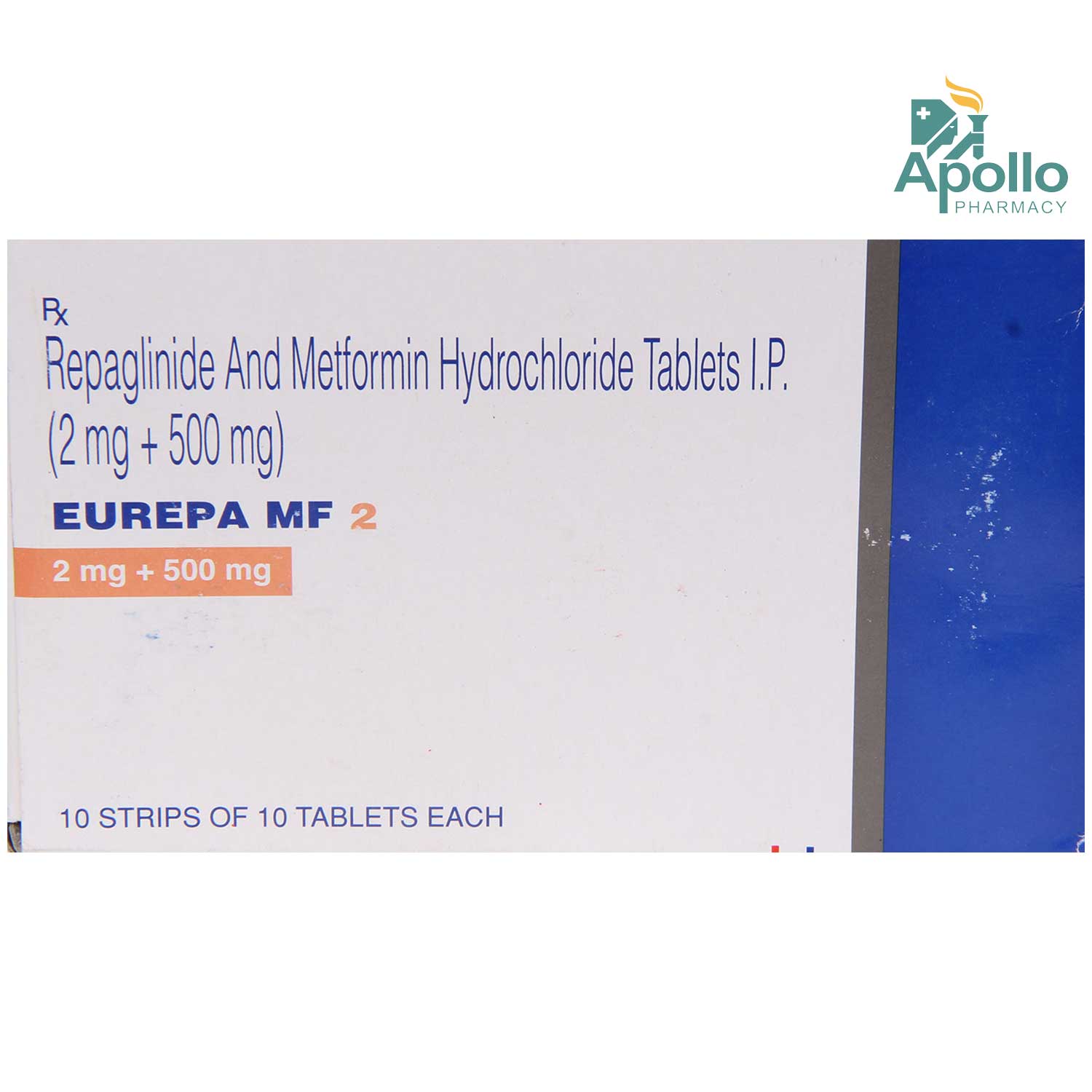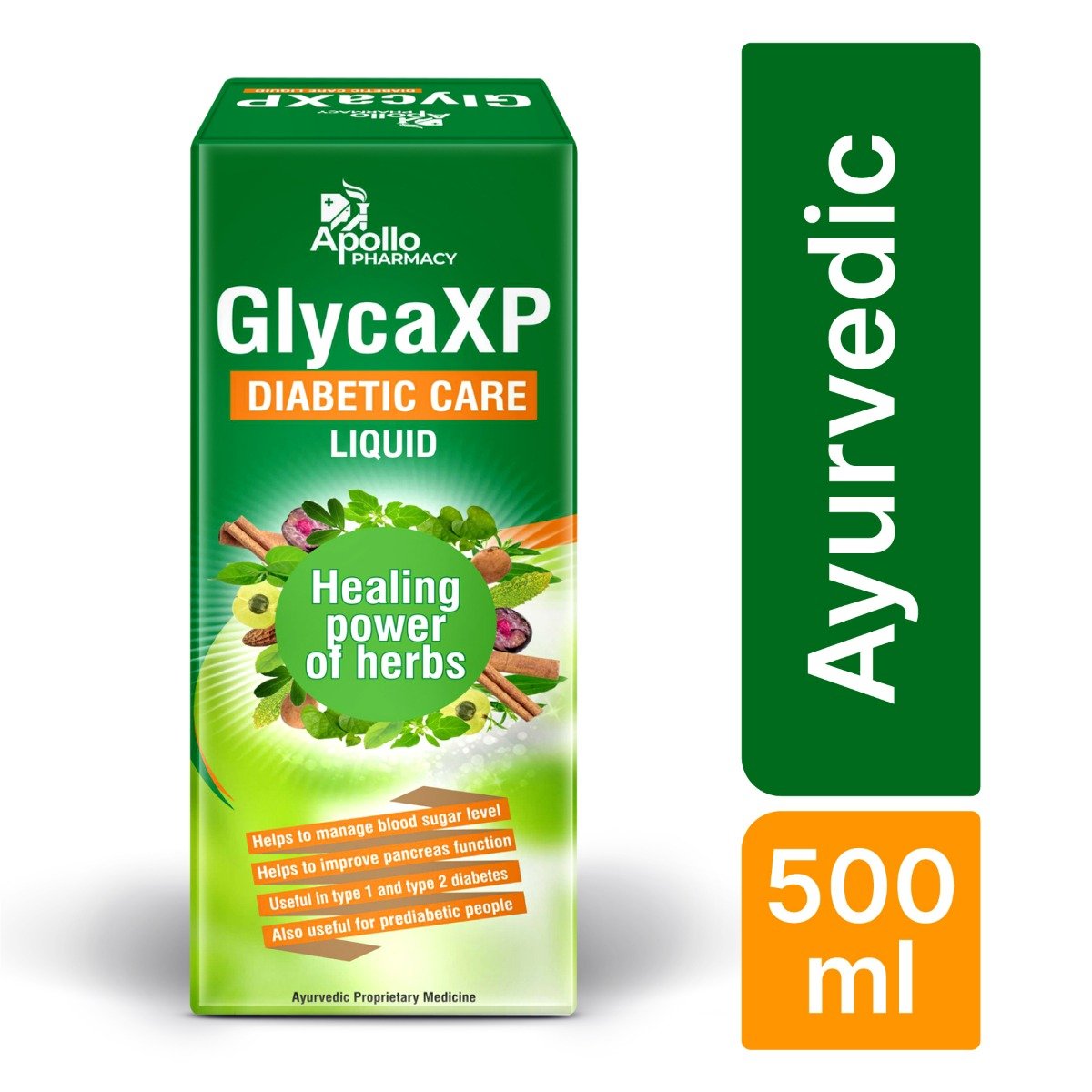Zrepag-2 MF Tablet

MRP ₹150
(Inclusive of all Taxes)
₹22.5 Cashback (15%)
know your delivery time
Provide Delivery Location
Composition :
Manufacturer/Marketer :
Consume Type :
Expires on or after :
Return Policy :

Secure Payment

Trusted by 8 Crore Indians

Genuine Products
Therapeutic Class
Country of origin
Manufacturer/Marketer address
Disclaimer
Alcohol
Safe if prescribed
You are recommended not to consume alcohol along with Zrepag-2 MF Tablet to avoid unpleasant side effects.
Pregnancy
Consult your doctor
As the data around the use of Zrepag-2 MF Tablet in pregnant women is limited, the use of Zrepag-2 MF Tablet in pregnancy is restricted. It is highly recommended to consult your doctor before taking this drug in case you are pregnant.
Breast Feeding
Consult your doctor
Caution should be exercised, and it is advisable to consult a doctor before using it.
Driving
Safe if prescribed
Zrepag-2 MF Tablet may cause hypoglycemia (low blood sugar levels), whose symptoms include unusual sleepiness, shivering, palpitations, sweating, etc. This may affect your ability to drive. Use caution while driving or doing anything that requires concentration.
Liver
Consult your doctor
Zrepag-2 MF Tablet to be taken with caution, especially if you have a history of liver diseases/conditions. The dose may have to be adjusted by your doctor.
Kidney
Consult your doctor
Zrepag-2 MF Tablet to be taken with caution, especially if you have a history of Kidney diseases/conditions. The dose may have to be adjusted by your doctor.
Children
Safe if prescribed
The safety and efficacy of Zrepag-2 MF Tablet in children have not been established. Zrepag-2 MF Tablet is not recommended in children.
Product Substitutes
About Zrepag-2 MF Tablet
Zrepag-2 MF Tablet belongs to a class of medicine known as an antidiabetic. It is a combination of two antidiabetic drugs: Repaglinide and Metformin. Type 2 diabetes is a chronic or lifelong condition affecting how your body processes glucose. People with type 2 diabetes either do not produce enough insulin or if the insulin is produced, it cannot perform its function in the body (insulin resistance). Due to this, the blood glucose level increases, and symptoms such as frequent urination, increased thirst, and increased hunger start. It can lead to serious complications like skin infection, eye problems (retinopathy), nerve damage (neuropathy), diabetic foot (foot ulcer), kidney disease (nephropathy), high blood pressure, and even stroke.
Repaglinide acts by increasing the amount of insulin released by the pancreas. It starts acting so quickly on controlling blood sugar levels immediately after a meal. On the other hand, Metformin, which is a 'biguanide', acts by lowering the liver's glucose production, delaying glucose absorption from the intestines, and increasing the body's response to insulin. In a nutshell, the two medicines prevent blood glucose levels from rising to very high levels, thus keeping your Diabetes under control. Zrepag-2 MF Tablet act together to keep your blood sugar levels under check. The strict control of blood sugars is essential to mention the many disabling side effects of Diabetes. Zrepag-2 MF Tablet shows optimum effects when taken along with healthy lifestyle changes like weight loss, regular exercise, healthy diet, etc.
Zrepag-2 MF Tablet should be taken with food to avoid an upset stomach. Zrepag-2 MF Tablet should be taken at the same time of the day each time for the best results. Your doctor will decide what dose should be taken for better advice, which can change quickly depending on your condition. A common side effect of Zrepag-2 MF Tablet is hypoglycaemia (low blood glucose levels), characterized by dizziness, sweating, palpitations, hunger pangs, dry mouth, skin, etc. So, to avoid hypoglycaemia, you should not miss meals and also should carry some form of sugar along with you. Other side effects include taste change, nausea, diarrhoea, stomach pain, headache, and upper respiratory symptoms.
You should not take Zrepag-2 MF Tablet if you have renal impairment, metabolic acidosis, including diabetic ketoacidosis (excess acids in your blood), and receiving gemfibrozil (used to treat abnormal blood lipid levels). Zrepag-2 MF Tablet should not be stopped even if you feel better, without consulting your doctor as your sugar level keeps changing. If you stop taking Zrepag-2 MF Tablet abruptly, it may increase your sugar levels which could further increase the risk of eyesight loss (retinopathy), kidney (nephropathy), and nerve damage (neuropathy). Zrepag-2 MF Tablet should not be taken if you have type 1 diabetes mellitus or severe kidney or liver disease. Please inform your doctor if you have any heart disease, are planning to get pregnant, or are breastfeeding.
Uses of Zrepag-2 MF Tablet
Medicinal Benefits Mweb
Key Benefits
Zrepag-2 MF Tablet should be taken with food to avoid an upset stomach. Zrepag-2 MF Tablet should be taken at the same time of the day each time for the best results. Your doctor will decide what dose should be taken for better advice, which can change quickly depending on your condition. A common side effect of Zrepag-2 MF Tablet is hypoglycaemia (low blood glucose levels), characterised by dizziness, sweating, palpitations, hunger pangs, dry mouth, skin, etc. To avoid hypoglycaemia, you should not miss meals and should carry some form of sugar along with you. Other side effects include taste change, nausea, diarrhoea, stomach pain, headache, and upper respiratory symptoms.
Directions for Use
Side Effects of Zrepag-2 MF Tablet
- Dizziness
- Sweating
- Palpitations
- hunger pangs
- Dry mouth and skin
- Hypoglycaemia (low blood glucose level)
Drug Warnings
Some diabetic patients taking Zrepag-2 MF Tablet may develop a rare but serious condition called lactic acidosis. In this condition, too much lactic acid is accumulated in the blood. So, your liver and kidney's proper functioning is required to eliminate excess lactic acid from the blood. You should not take Zrepag-2 MF Tablet if you have kidney disease, as measured by a blood test. Zrepag-2 MF Tablet may lower vitamin B12 levels, so try to have blood tests for annual blood and vitamin. Zrepag-2 MF Tablet , when used with or without insulin, tends to lower the blood sugar level extremely. So, the doctor may lower the dose of insulin. Zrepag-2 MF Tablet may lower your thyroid-stimulating hormone (TSH), so an annual check-up of TSH is suggested.
Drug-Drug Interactions
Drug-Drug Interactions
Login/Sign Up
When Zrepag-2 MF Tablet is taken with Gemfibrozil, the level of Zrepag-2 MF Tablet in the blood can go up. This can increase the risk or severity of side effects.
How to manage the interaction:
Taking Zrepag-2 MF Tablet with Gemfibrozil can possibly result in an interaction, it can be taken if a doctor has advised it. However, if you experience sudden dizziness, lightheadedness, fainting, shortness of breath, chest pain or tightness, rapid heartbeat, or memory loss, contact a doctor immediately. Do not discontinue any medications without consulting a doctor.
Coadministration of Zrepag-2 MF Tablet with Gatifloxacin may sometimes affect blood glucose levels. Both low blood glucose and, less frequently, high blood glucose have been reported.
How to manage the interaction:
Although there is a possible interaction, Zrepag-2 MF Tablet can be taken with Gatifloxacin if prescribed by the doctor. However, consult the doctor if you experience unusual symptoms. Do not stop using any medications without first talking to your doctor.
Co-administration of Zrepag-2 MF Tablet and Iodamide can increase the risk of lactic acidosis (when the body produces too much lactic acid).
How to manage the interaction:
Taking Zrepag-2 MF Tablet with Iodamide is generally avoided as it can result in an interaction, please consult your doctor before taking it.
Co-administration of Zrepag-2 MF Tablet and Iobenzamic acid can increase the risk of lactic acidosis (when the body produces too much lactic acid).
How to manage the interaction:
Taking Zrepag-2 MF Tablet with Iobenzamic acid is generally avoided as it can result in an interaction, please consult your doctor before taking it.
Co-administration of Zrepag-2 MF Tablet with Metrizamide together can cause the risk of lactic acidosis (when the body produces too much lactic acid ).
How to manage the interaction:
Taking Zrepag-2 MF Tablet with Metrizamide is generally avoided as it can possibly result in an interaction, it can be taken if a doctor has advised it. However, if you experience headaches, muscle cramps or pain, contact a doctor immediately. Do not discontinue any medications without consulting a doctor.
Co-administration of Iopydol with Zrepag-2 MF Tablet can increase the risk of side effects.
How to manage the interaction:
Taking Zrepag-2 MF Tablet with Iopydol is not recommended, please consult your doctor before taking it.
Co-administration of Zrepag-2 MF Tablet and Iocarmic acid can increase the risk of lactic acidosis (when the body produces too much lactic acid).
How to manage the interaction:
Taking Zrepag-2 MF Tablet with Iocarmic acid is generally avoided as it can result in an interaction. please consult your doctor before taking it.
Co-administration of Iodixanol with Zrepag-2 MF Tablet can increase the risk of side effects.
How to manage the interaction:
Taking Zrepag-2 MF Tablet with Iodixanol is not recommended, please consult a doctor before taking it. Do not discontinue the medications without consulting a doctor.
Co-administration of Zrepag-2 MF Tablet and Iobitridol can increase the risk of lactic acidosis (when the body produces too much lactic acid).
How to manage the interaction:
Taking Zrepag-2 MF Tablet with Iobitridol is generally avoided as it can result in an interaction. Please consult your doctor before taking it.
Co-administration of Ioversol with Zrepag-2 MF Tablet can increase the risk of side effects.
How to manage the interaction:
Taking Zrepag-2 MF Tablet with Ioversol is not recommended, please consult your doctor before taking it.
Drug-Food Interactions
Drug-Food Interactions
Login/Sign Up
Drug-Diseases Interactions
Drug-Diseases Interactions
Login/Sign Up
Drug-Drug Interactions Checker List
- ASPIRIN
- INSULIN GLARGINE
- LEVOTHYROXINE SODIUM
- METOPROLOL
- SITAGLIPTIN
- FUROSEMIDE
- GLIPIZIDE
Habit Forming
Special Advise
- Keep taking the drug even if you think your blood sugar levels are under control. If you miss a dose, do not take a larger dose, cons. Consulttreating physician for advice.
- Take short, frequent meals, avoid prolonged fasting when taking this drug. Beware of hypoglycaemia symptoms include sweating, dizziness, palpitations, shivering, intense thirst, dry mouth, dry skin, frequent urination, etc. Whenever you experience the above-mentioned symptoms, immediately consume 5-6 candies, three glucose biscuits, or three teaspoons of honey/sugar and get in touch with your physician. Make sure to carry these with you at all times, especially for long travels.
- Before the doctor prescribes this medicine, it is always better that your physician knows about any underlying conditions like kidney or liver disease, prior heart attack, alcohol intake, etc.
- Avoid drinking alcohol while on this drug as it increases the risk of hypoglycaemia (a decrease in blood sugar which might be fatal in some cases) and lactic acidosis (when the lactic acid increases in the body, impacting the functioning of various organs in the body).
- Try to quit smoking and reduce carbohydrate-rich food like potatoes, mangoes, bread, sugar etc.
- Remember, lifestyle modifications are the most important step in controlling blood sugar levels.
Diet & Lifestyle Advise
- Fill your half plate with starchy veggies, a quarter with proteins, and a quarter with whole grains.
- Eat at regular intervals. Do not take the long gap between a meal or snack.
- Monitor your blood sugar level regularly, especially when there are a lot of fluctuations.
- Invest in at least 150 minutes of moderate-intensity physical activity and 15 minutes of high-intensity exercise weekly.
- Lose weight gradually to achieve a healthy body mass index (18.5 to 24.9).
- Replace refined carbohydrates containing whole-grain foods and increase the intake of fruits, veggies, and other fibre-enriched foods.
- Reduce saturated fat (or hidden fats) intake in food like chips, crisps, pastries, biscuits, and samosas. Choose omega-3 fatty acid-containing oils for daily cooking. For frying, you may use palm oil, mustard oil, groundnut oil, rice bran oil, and safflower oil.
- Do not take stress as it may elevate your blood sugar level. You may adopt stress management techniques like mindfulness, yoga, or meditation to control stress-related blood sugar changes.
- Opt for low-fat dairy products (low-fat yoghurt, fat-free milk, cheese, etc.).
- Keep your blood pressure as normal (120/80) as possible, as it reduces the risk of cardiovascular diseases in diabetes patients.
All Substitutes & Brand Comparisons
RX
Out of StockRepadix M 2mg/500mg Tablet
Zeelab Pharmacy Pvt Ltd
₹25
(₹2.25 per unit)
83% CHEAPERRX
Out of StockVorepa M Tablet 10's
Geospace Pharmaceutical Pvt Ltd
₹133
(₹13.3 per unit)
1% CHEAPERRX
Out of StockRepavid Met 2mg/500mg Tablet
₹164
(₹14.76 per unit)
9% COSTLIER

Have a query?
Customers Also Bought





